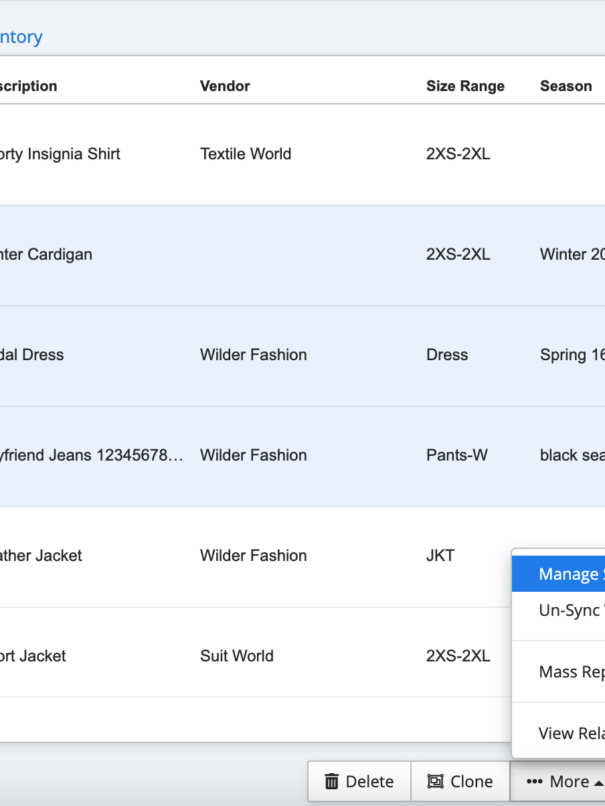For apparel brands, efficient clothing fulfillment and returns management are operational necessities.
Every stage of the process, from warehouse organization to order delivery and returns processing, directly impacts customer satisfaction, brand perception, and the bottom line. Inefficiencies and delays translate to lost revenue, damaged reputation, and diminished growth potential.
It is quite rare that businesses get everything right. But don’t worry, we have all the insider info you will ever need.
The Impact of Returns
Why do customers return apparel? Common reasons include sizing issues, poor fit, perceived quality issues, and simply not liking the style. Clear and accurate product information, including detailed descriptions, size charts, and customer reviews, can help reduce returns by setting realistic expectations.
But the cost of returns goes beyond just shipping fees. It includes handling, inspection, restocking, and potentially losing the item’s value if it cannot be resold. These costs can significantly impact your profit margins, making it essential to minimize returns whenever possible.
So how can businesses go about this the right way? Let’s take a deeper dive.
Optimizing Clothing Fulfillment
Let’s start with optimizing clothing fulfillment.
The Foundation: Warehouse Efficiency
Efficient warehouse operations are the backbone of successful clothing fulfillment. A well-organized warehouse, supported by a robust warehouse management system (WMS), ensures accurate inventory tracking, optimized picking and packing, and streamlined automation.
Leading WMS solutions like Blue Yonder and Manhattan Associates, offer features tailored to apparel, including size and color tracking and batch management. Optimize your warehouse layout with strategies like zone picking, wave picking, and cross-docking to minimize travel time and maximize space utilization. Embrace automation with AGVs, robotic arms, and sorting systems to further enhance speed and accuracy.
Fulfillment Strategies
Choose between in-house fulfillment, which offers greater control, and outsourced fulfillment, which provides scalability and expertise, based on your business needs and resources. Regardless of your choice, prioritize efficient order processing by streamlining workflows and selecting appropriate picking methods. Utilize barcode scanners and mobile devices to improve picking speed and accuracy.
Packaging should both protect garments and reflect your brand. Choose appropriate materials, consider sustainable options, and select shipping carriers based on cost, speed, and reliability. Leverage shipping software to automate label generation and provide real-time tracking information.
Technology in Apparel Fulfillment
Technology plays a crucial role in optimizing clothing fulfillment. Order management systems (OMS) centralize order management across multiple channels, providing real-time tracking and inventory updates. Inventory management software enables real-time tracking, demand forecasting, and automated reordering. Data analytics helps identify bottlenecks, track KPIs, and optimize warehouse performance.
Meeting Customers Where They Are
Customers expect a consistent and integrated experience, whether they’re shopping online from their couch, browsing in a physical store, or discovering products through social media. Omnichannel fulfillment is no longer just a trend; it’s a necessity for apparel brands to remain competitive and meet these evolving expectations. This approach requires creating a unified commerce platform that seamlessly connects all sales channels, providing real-time inventory visibility and flexible fulfillment options.
Imagine a customer browsing your online store and finding the perfect jacket, but it’s only available in a store across the country. With an omnichannel strategy, they could choose to have it shipped from that store, pick it up themselves if they happen to be nearby, or even have it delivered from a store closer to their location. This flexibility not only enhances the customer experience but also optimizes inventory utilization and reduces delivery times.
Moreover, omnichannel fulfillment extends to returns, allowing customers to return items purchased online to a physical store or vice versa, further streamlining the process and improving satisfaction.
Effective Returns Management
Returns are an inevitable part of the apparel industry, but they don’t have to be a drain on your profits. Effective returns management can minimize costs, improve customer satisfaction, and even provide valuable insights to improve your business.
Minimizing Returns
Proactive measures can help reduce the number of returns your business receives. Accurate product information and sizing are crucial. Consider implementing 3D visualization or virtual try-on technology to help customers make more informed purchasing decisions. Offer excellent pre-purchase customer support through chatbots, FAQs, and size guides to address customer questions and concerns. Implement rigorous quality control measures and pre-shipment inspections to minimize returns due to defects or damage.
Streamlining the Returns Process
Make the returns process as easy as possible for your customers. Provide a user-friendly online returns portal with clear instructions and automated return label generation. Establish a customer-centric return policy that balances customer satisfaction with your business needs. Efficiently process returns by streamlining receiving, inspecting, sorting, and restocking procedures. Optimize reverse logistics by offering various return shipping options, such as prepaid labels and drop-off locations, while minimizing costs and environmental impact.
Turning Returns into Opportunities
Returned items don’t have to be a loss. Analyze returns data to identify trends and areas for improvement in product design, sizing, or descriptions. Collect customer feedback to understand the reasons for returns and use this information to improve your products and processes. Explore options for reselling returned items, either as new or through a dedicated outlet or secondary market. Consider refurbishing or repurposing returned items to minimize waste and maximize value recovery.
Preventing Fraud
To effectively prevent fraudulent returns, businesses should implement a comprehensive approach that includes verifying customer information, monitoring return patterns, and utilizing advanced fraud detection tools.
Validating customer addresses, contact details, and purchase history, can help businesses identify discrepancies or inconsistencies that may indicate fraudulent activity. Additionally, monitoring return patterns can help identify unusual activities, such as frequent returns for the same item or multiple returns from the same address within a short period. These patterns can be indicative of fraudulent behavior.
Furthermore, employing sophisticated fraud detection software can provide a more proactive approach. These tools can analyze various data points, including purchase history, shipping addresses, payment methods, and device information, to identify potential red flags. By leveraging advanced analytics, businesses can detect fraudulent activity more efficiently and prevent losses.
ApparelMagic: Your Partner in Apparel Success
The apparel industry is known for its fast pace and constant change. New trends pop up constantly, orders come in quickly, and customers expect their clothes to arrive without delay. To succeed in this competitive world, you need a system that can handle the unique challenges of clothing fulfillment and returns management. That’s where ApparelMagic comes in. It’s an ERP system built specifically for apparel businesses, helping you manage every part of your operation, from the initial design to the moment a satisfied customer receives their order.
ApparelMagic connects all the different parts of your business, like design, supply chain operations, production, sales, and shipping, and helps them work together smoothly. With ApparelMagic, it’s easy to track the entire journey of a garment, from the first idea to the finished product. It helps you find the best suppliers for your materials and manage your orders efficiently. You can plan your production, track your work, and see how things are progressing in real time, ensuring that everything stays on schedule.
And because ApparelMagic is made for apparel, it handles the things that other systems might miss. It can easily manage all the different sizes and colors of your products, so you always have an accurate view of your inventory. It helps you keep track of all your materials, from fabrics and trims to buttons and zippers, so you never run out of the essential parts you need. Plus, you can build quality control checks right into your workflow, ensuring that every garment meets your standards.
But ApparelMagic does more than just keep things organized. It also gives you the tools you need to adapt quickly to changes in the market. With real-time insights into sales and inventory, you can see what’s selling and what’s not, and make changes to your production and marketing strategies. This helps you stay ahead of trends and keep your customers happy.
ApparelMagic also simplifies returns management. It helps you process returns quickly and efficiently, keeping your customers satisfied and minimizing the costs associated with returns.
So schedule a call now and see how you can boost your apparel brand’s efficiency.
Wrap-up
Getting clothes from the warehouse to the customer quickly and efficiently is key. It’s about having a smooth system for managing orders, keeping your warehouse organized, and making sure deliveries happen on time. And don’t forget about returns; making this process easy keeps customers happy. Using the right technology and strategies can help apparel businesses thrive in a competitive market.







